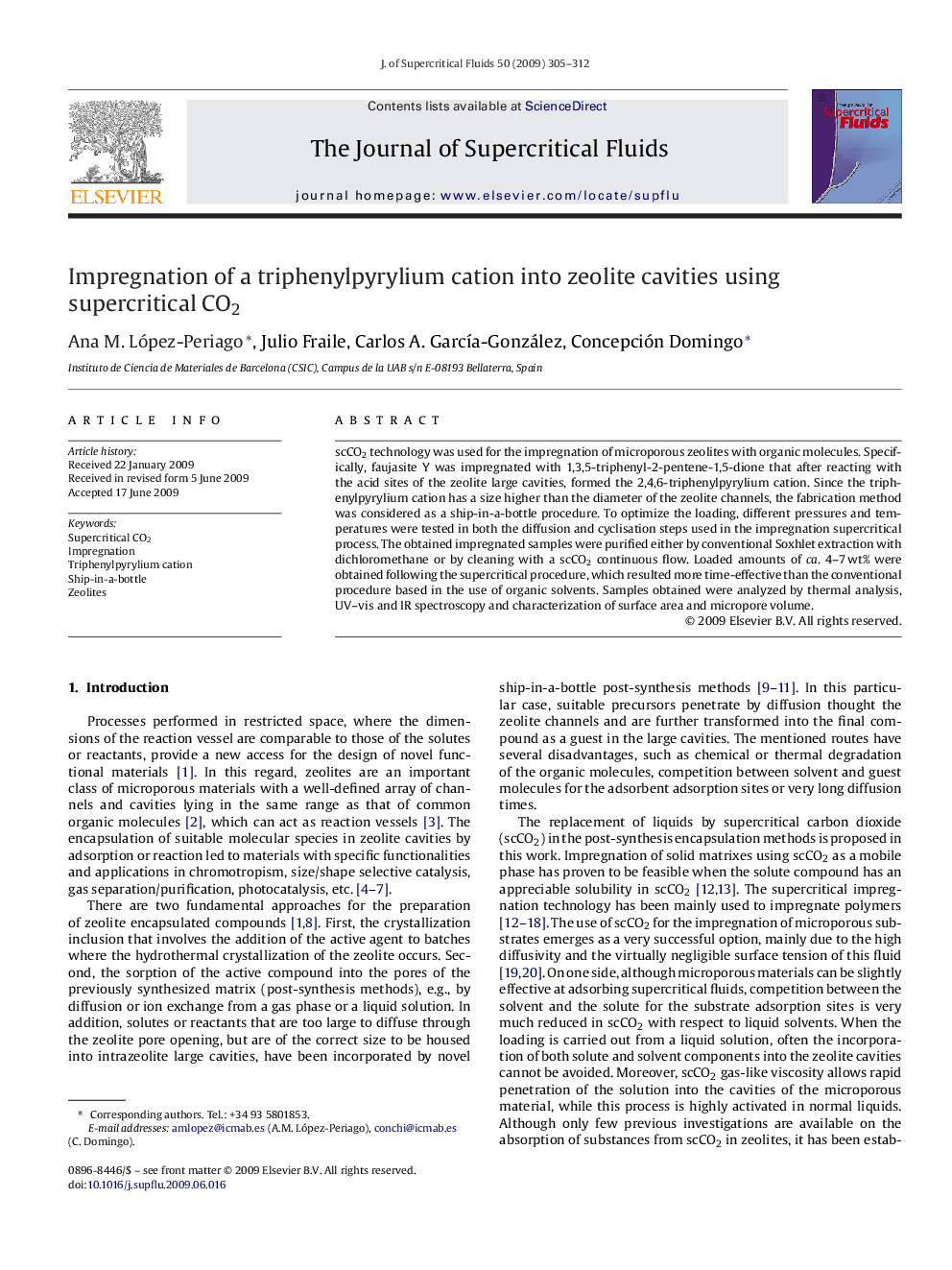| Article ID | Journal | Published Year | Pages | File Type |
|---|---|---|---|---|
| 231464 | The Journal of Supercritical Fluids | 2009 | 8 Pages |
scCO2 technology was used for the impregnation of microporous zeolites with organic molecules. Specifically, faujasite Y was impregnated with 1,3,5-triphenyl-2-pentene-1,5-dione that after reacting with the acid sites of the zeolite large cavities, formed the 2,4,6-triphenylpyrylium cation. Since the triphenylpyrylium cation has a size higher than the diameter of the zeolite channels, the fabrication method was considered as a ship-in-a-bottle procedure. To optimize the loading, different pressures and temperatures were tested in both the diffusion and cyclisation steps used in the impregnation supercritical process. The obtained impregnated samples were purified either by conventional Soxhlet extraction with dichloromethane or by cleaning with a scCO2 continuous flow. Loaded amounts of ca. 4–7 wt% were obtained following the supercritical procedure, which resulted more time-effective than the conventional procedure based in the use of organic solvents. Samples obtained were analyzed by thermal analysis, UV–vis and IR spectroscopy and characterization of surface area and micropore volume.
Graphical abstractThe collection of FT-IR spectra of the impregnated zeolite samples display the absorption bands corresponding to the triphenylpyrylium cation.Figure optionsDownload full-size imageDownload as PowerPoint slide
